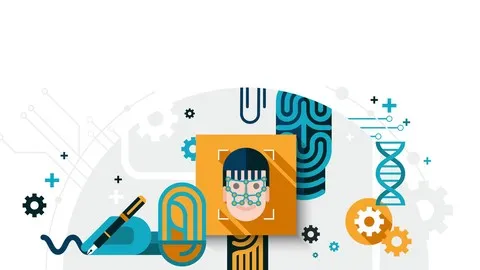
Computer Vision and Image Analysis 
This course provides an introduction to Computer Vision and Image Analysis using Python packages such as PIL, Scikit-Image, OpenCV, and others. Students will learn how to use these tools to extract actionable information from images, and explore machine learning techniques to further analyze and classify images. ▼
ADVERTISEMENT
Course Feature
![]() Cost:
Cost:
Free
![]() Provider:
Provider:
Edx
![]() Certificate:
Certificate:
No Information
![]() Language:
Language:
English
![]() Start Date:
Start Date:
1st Apr, 2020
Course Overview
❗The content presented here is sourced directly from Edx platform. For comprehensive course details, including enrollment information, simply click on the 'Go to class' link on our website.
Updated in [March 06th, 2023]
Learners can learn a variety of topics from this course, including:
1. Image Analysis: Learn how to use Python packages like PIL, Scikit-Image, and OpenCV to analyze images and extract actionable information.
2. Machine Learning for Computer Vision: Explore machine learning techniques for image classification, object detection, and semantic segmentation. Use industry-standard machine learning frameworks like SciKit-Learn, Keras, and PyTorch.
3. Deep Learning: Discover deep learning techniques for image classification, object detection, and semantic segmentation. Learn how to use frameworks like Keras and PyTorch to build and train deep learning models.
[Applications]
After completing this course, students can apply their knowledge of computer vision and image analysis to a variety of tasks. They can use Python packages such as PIL, Scikit-Image, OpenCV, and others to analyze images and extract actionable information. Additionally, they can use machine learning frameworks such as SciKit-Learn, Keras, and PyTorch to build models for image classification, object detection, and semantic segmentation.
[Career Paths]
1. Computer Vision Engineer: Computer Vision Engineers are responsible for developing and deploying computer vision algorithms and systems. They use a variety of techniques, such as deep learning, to create systems that can detect, classify, and track objects in images and videos. This field is rapidly growing, with new applications being developed in areas such as autonomous vehicles, medical imaging, and robotics.
2. Image Processing Engineer: Image Processing Engineers are responsible for developing and deploying image processing algorithms and systems. They use a variety of techniques, such as image segmentation, to create systems that can extract meaningful information from images. This field is rapidly growing, with new applications being developed in areas such as medical imaging, facial recognition, and autonomous vehicles.
3. Machine Learning Engineer: Machine Learning Engineers are responsible for developing and deploying machine learning algorithms and systems. They use a variety of techniques, such as deep learning, to create systems that can learn from data and make predictions. This field is rapidly growing, with new applications being developed in areas such as natural language processing, computer vision, and robotics.
4. Data Scientist: Data Scientists are responsible for analyzing and interpreting data to uncover insights and trends. They use a variety of techniques, such as machine learning, to create systems that can make predictions and provide actionable insights. This field is rapidly growing, with new applications being developed in areas such as healthcare, finance, and marketing.
[Education Paths]
1. Bachelor of Science in Computer Science: This degree program provides students with a comprehensive understanding of computer science fundamentals, including programming, algorithms, data structures, and software engineering. Students will also learn about the latest developments in computer vision and image analysis, such as deep learning and machine learning.
2. Master of Science in Artificial Intelligence: This degree program focuses on the development of artificial intelligence systems, including computer vision and image analysis. Students will learn about the latest techniques in deep learning, machine learning, and natural language processing, as well as the ethical implications of AI.
3. Doctor of Philosophy in Computer Science: This degree program provides students with an in-depth understanding of computer science fundamentals, including programming, algorithms, data structures, and software engineering. Students will also learn about the latest developments in computer vision and image analysis, such as deep learning and machine learning.
4. Master of Science in Computer Vision: This degree program focuses on the development of computer vision systems, including image analysis. Students will learn about the latest techniques in deep learning, machine learning, and natural language processing, as well as the ethical implications of AI.
Course Provider

Provider Edx's Stats at AZClass
Discussion and Reviews
0.0 (Based on 0 reviews)
Explore Similar Online Courses

Autodesk Inventor 2018 Essential Training

How to Use The IFE-EFE Matrix for Strategic Analysis

Python for Informatics: Exploring Information

Social Network Analysis

Introduction to Systematic Review and Meta-Analysis

The Analytics Edge

DCO042 - Python For Informatics

Causal Diagrams: Draw Your Assumptions Before Your Conclusions

Whole genome sequencing of bacterial genomes - tools and applications

Introduction to Computer Vision

Learn Computer Vision with OpenCV Library using Python

Build an Object Detection Model with Python
 Related Categories
Related Categories
 Popular Providers
Popular Providers
Quiz
 Submitted Sucessfully
Submitted Sucessfully
1. What is the main focus of this course?
2. Which machine learning frameworks are used in this course?
3. When will this course retire?
4. What is the name of the industry-standard machine learning framework used in this course?
Correct Answer: Keras, SciKit-Learn, and PyTorch.


Start your review of Computer Vision and Image Analysis